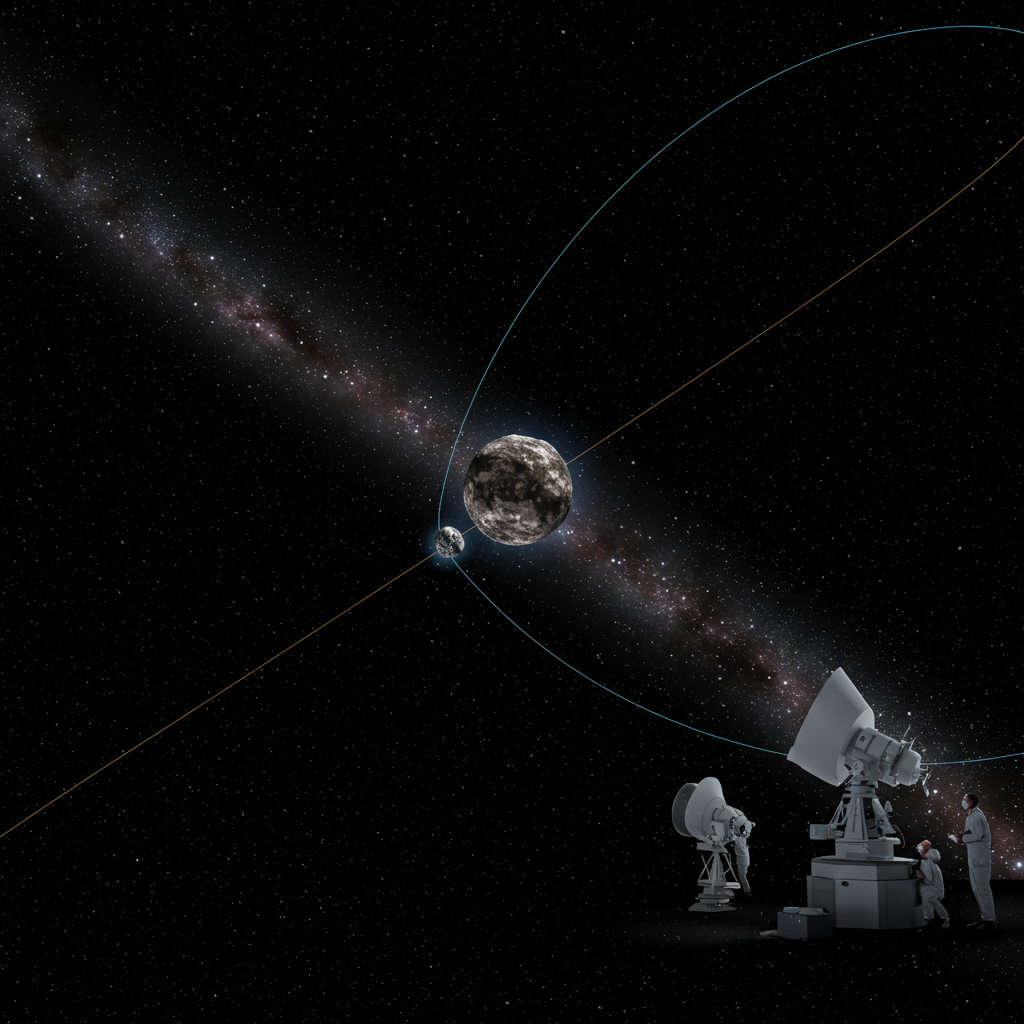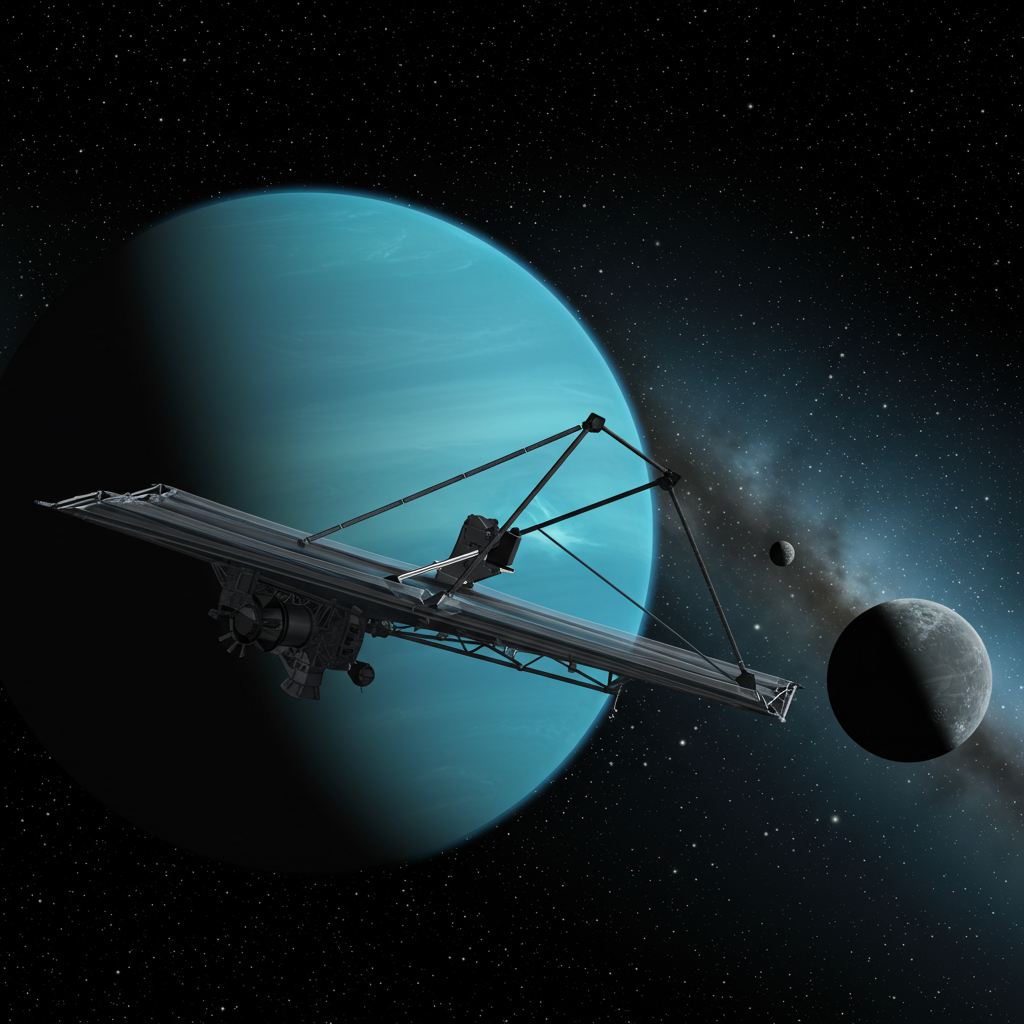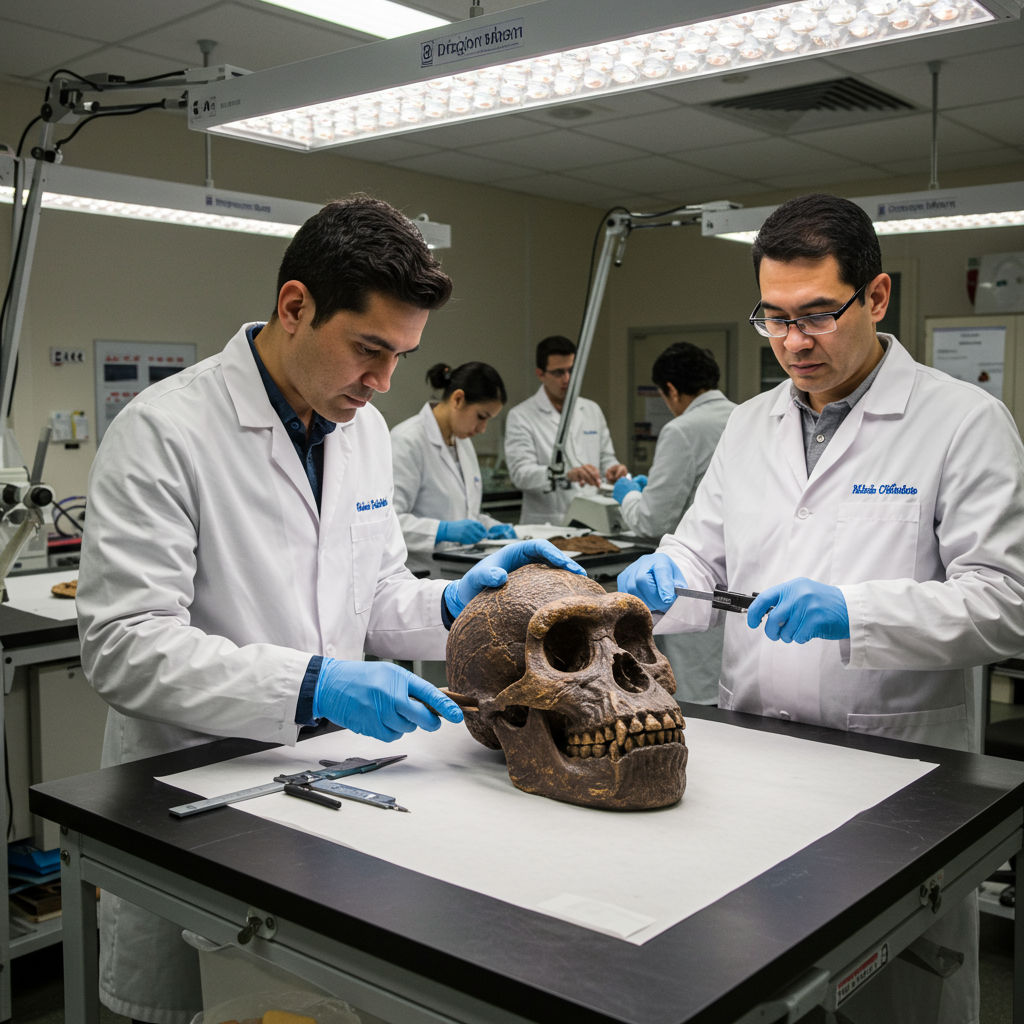A confirmed visitor from outside our star system is currently passing through our cosmic neighborhood. This is only the third such interstellar object ever detected by humanity. Provisionally known as A11pl3Z, it has now received the official designation 3I/atlas (or C/2025 N1). Scientists are actively tracking its unprecedented journey.
Its arrival offers a rare and exciting chance to study material from another stellar realm. This makes the object a high-priority target for astronomers worldwide. The discovery highlights significant advances in our ability to spot these fast-moving cosmic wanderers.
What is This Mysterious Cosmic Visitor?
Officially confirmed by the Minor Planet Center (MPC) on July 2, 2025, 3I/ATLAS is the third confirmed interstellar object to be observed transiting our solar system. Following the famous ‘Oumuamua in 2017 and comet 2I/Borisov in 2019, this new arrival provides a crucial third data point for understanding objects originating beyond our Sun’s gravity.
Based on early observations, astronomers estimate 3I/ATLAS could be quite large. Its potential size ranges up to 20 kilometers (or about 12 miles) in diameter. Tentative reports from the MPC suggest it exhibits characteristics of a comet. These include a marginal coma and a short tail, approximately 3 arcseconds long. While this points towards a cometary nature, the possibility of it being a rocky asteroid is not entirely ruled out yet.
How Was 3I/ATLAS Discovered?
The initial sighting of this interstellar object candidate occurred through NASA’s Asteroid Terrestrial-impact Last Alert System (ATLAS). This network uses telescopes positioned globally to scan the skies for potentially hazardous objects. An earlier image captured by David Rankin at the Catalina Sky Survey also recorded the object on Wednesday, July 2, 2025.
Initial reports indicated an unknown asteroid following a highly unusual, eccentric path. This initial observation was submitted to the MPC, which catalogs small bodies in the solar system. Swift follow-up observations from various skywatchers, including those from the Deep Random Survey in Chile and amateur astronomers like Sam Deen, quickly provided more data. These precovery images within ATLAS data, dating back to June 25-29 and even June 14th, were vital.
With just six days of observational data points, scientists could calculate the object’s orbit with impressive precision. The calculated eccentricity (e) was found to be extremely high, between approximately 6 and 10.4. An eccentricity value significantly greater than 1 is the definitive marker confirming an object originated from outside the Sun’s gravitational influence. David Rankin noted that an eccentricity near 10 is “like nothing seen before,” underscoring the object’s distinctly interstellar trajectory.
A Cosmic Journey: The Object’s Path Through Our Solar System
Currently, 3I/ATLAS is situated relatively far from the Sun. Its initial position was located between the orbits of the asteroid belt and Jupiter, approximately 3.8 times the Earth-Sun distance away from the Sun. It is now hurtling towards the inner solar system.
The object is traveling at an incredible speed. It is currently moving at around 66 kilometers per second (approximately 147,000 to 152,000 miles per hour). This speed will increase as the Sun’s gravity pulls it inward. Its predicted trajectory suggests it will pass relatively close to Mars. This flyby is expected on October 3, 2025, coming within about 0.4 AU of the Red Planet. This close pass might offer potential observation opportunities for missions like the Mars Reconnaissance Orbiter.
3I/ATLAS is anticipated to reach its closest point to the Sun, known as perihelion, in October 2025. At perihelion, it will be about 2 astronomical units away from the Sun, roughly twice the Earth-Sun distance. During this time, it will be on the opposite side of the Sun from Earth. This trajectory ensures the object poses absolutely no threat to our planet. Following its closest approach to the Sun, 3I/ATLAS will continue its journey. It is projected to make its closest pass by Earth in December 2025 as it speeds back out of the solar system, eventually returning to interstellar space forever.
Why 3I/ATLAS is a Big Deal for Astronomy
The discovery and confirmation of 3I/ATLAS are highly significant for the astronomical community. Before 2017, interstellar objects passing through our solar system were purely theoretical. ‘Oumuamua and Borisov turned theory into reality. This third confirmed visitor solidifies our understanding that such objects are real and detectable phenomena.
Each new interstellar object discovered provides invaluable data. By studying their composition, speed, and trajectory, scientists can gain unique insights. This includes information about the materials present in other star systems and how planetary systems form and eject debris. The rarity of such confirmed sightings elevates 3I/ATLAS to a high-priority observation target. Astronomers are eager to gather as much information as possible during its limited time in our solar system.
Comparatively, while ‘Oumuamua remained enigmatic (even sparking debates about artificial origin, later attributed to natural causes) and Borisov was clearly a comet, 3I/ATLAS offers new characteristics and an opportunity for more detailed study thanks to advancements in technology since 2017. Its slightly longer observation window compared to previous objects is particularly valuable.
Studying a Speeding Bullet: Observation Challenges and Opportunities
Observing an interstellar object presents considerable challenges, primarily due to their incredible speed. These objects traverse the solar system rapidly. This leaves only a limited window for ground and space-based telescopes to gather data. Scientists estimate the prime observation period for 3I/ATLAS will last roughly until the end of 2025.
Despite the time constraint, astronomers are well-equipped to study 3I/ATLAS from afar. The network of telescopes that discovered it, like ATLAS, continue to monitor its movement. Other powerful instruments, such as the upcoming Vera C. Rubin Observatory, which excels at detecting moving objects across vast areas of the sky, could contribute valuable data. There are also suggestions, like that from astronomer Avi Loeb, to potentially use the James Webb Space Telescope to look for subtle signs of non-gravitational acceleration, which could indicate certain compositions or even speculative artificial origins (though natural explanations are the current focus).
Spectrometers will be crucial tools during the observation period. By analyzing the light reflected or emitted by the object, astronomers can determine its chemical composition. This data will help scientists understand what these interstellar travelers are made of and how they compare to objects formed within our own solar system. While sending a physical mission to intercept 3I/ATLAS is currently beyond technological capabilities due to its speed, future missions like ESA’s Comet Interceptor, planned for 2029, are being designed to wait for and quickly respond to newly discovered comets or interstellar objects, offering exciting prospects for future encounters.
Frequently Asked Questions
What is the third interstellar object, 3I/ATLAS?
3I/ATLAS, also known provisionally as A11pl3Z, is the third confirmed object detected passing through our solar system that originated from another star system. Astronomers estimate its diameter to be up to 20 kilometers (12 miles). Initial observations showing a slight coma and tail suggest it may be a comet, although its exact nature is still being determined.
Is the interstellar object 3I/ATLAS a threat to Earth?
No, the interstellar object 3I/ATLAS poses no threat to Earth. Its calculated trajectory shows it will pass by Mars in October 2025 and then reach its closest point to the Sun. During its closest approach to the Sun, it will be on the opposite side of the Sun from Earth. Its path carries it back out of the solar system, ensuring it will not collide with our planet.
When will 3I/ATLAS be closest to the Sun and Mars?
The object 3I/ATLAS is predicted to make its closest approach to Mars on October 3, 2025, passing within approximately 0.4 AU of the planet. Its closest point to the Sun, called perihelion, is expected later in October 2025, at a distance of about 2 astronomical units (twice the Earth-Sun distance). After perihelion, it will head back out of the solar system.
A New Era of Interstellar Discovery
The confirmation of 3I/ATLAS marks a significant moment in astronomy. It reinforces the idea that interstellar objects are not just theoretical concepts but real, detectable phenomena. Its rapid discovery and confirmation showcase the power of modern astronomical surveys and global collaboration.
Scientists are now in a race against time to gather as much data as possible during the brief period 3I/ATLAS remains observable. The insights gained from studying this object could revolutionize our understanding of planetary systems beyond our own. As technology continues to advance, astronomers are hopeful that the discovery of interstellar visitors will become more frequent, opening new windows into the composition and dynamics of the wider galaxy.




